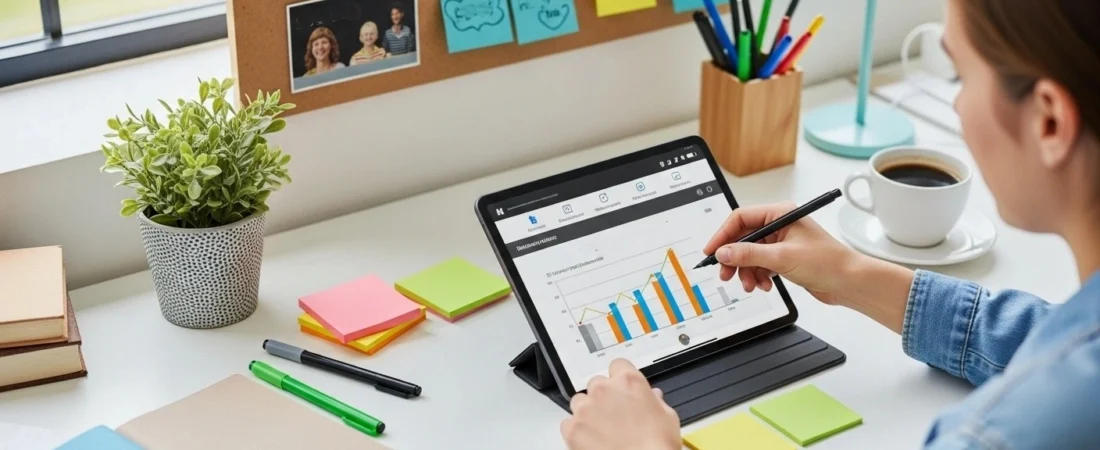For most of the people, the word “budgeting” brings to mind restrictive spreadsheets and a sense of deprivation. This perception, however, often deters individuals from embracing a practice that significantly enhances financial well-being. The truth is, tracking your spending does not need to be a tedious chore. By adopting innovative approaches, individuals can transform this essential financial activity into an engaging and enlightening process. This article explores several creative methods to monitor your expenditures, making budgeting more manageable and less monotonous.
Visualizing Your Financial Landscape
Traditional budgeting often relies on numerical data, which can feel abstract. A more intuitive approach involves visualizing your financial landscape. Consider creating a vision board for your finances. Instead of just listing savings goals, find images that represent them: a picture of a dream vacation spot for travel savings, or a cozy home for a down payment fund. As you allocate funds or make progress, you can physically mark off or move elements on your board. This tangible representation offers a constant reminder of your objectives and the progress you are making, making the act of saving and tracking more meaningful.
Another visual method involves using color-coded systems. Assign a specific color to different spending categories. For instance, blue for housing, green for groceries, and red for entertainment. When reviewing bank statements or logging transactions, highlight or categorize them with the corresponding color. This quickly reveals where your money goes at a glance, identifying potential areas for adjustment without poring over columns of numbers. A visual budget often makes patterns immediately apparent, offering insights more readily than a numerical breakdown alone.
Gamifying Your Financial Habits
Introducing elements of a game can make budgeting unexpectedly enjoyable. Set up challenges for yourself or with a partner. Perhaps a “no-spend week” where you aim to purchase only essentials, or a “savings sprint” to hit a specific savings target by a certain date. Reward yourselves upon reaching these milestones, perhaps with a small, pre-budgeted treat that does not derail your progress. The competitive aspect, even if only against yourself, can provide powerful motivation.
Consider using a point system for spending categories. Assign points for staying within budget in certain areas or for actively finding ways to save. For example, earning points for packing lunch instead of buying it, or for choosing public transport over driving. Accumulate these points and “redeem” them for a non-financial reward, such as an extra hour of leisure time or a new book from the library. This turns financial discipline into a rewarding pursuit, shifting the focus from restriction to achievement.
Leveraging Technology Creatively
While many budgeting apps exist, the key is to use them in a way that resonates with your personal style. Instead of simply inputting data, explore features that offer a more dynamic experience. Many applications allow for custom categories and tags. Take advantage of these by creating highly specific tags that genuinely reflect your spending habits, such as “coffee with friends” or “hobby supplies.” This level of detail offers a more precise understanding of where your money truly goes, revealing patterns that broader categories might obscure.
Another technological approach involves using voice memos or brief video logs to track spending. After a purchase, quickly record what you bought and how much it cost. Later, you can transcribe these notes into your budgeting system. This method caters to individuals who prefer speaking over writing, and the act of vocalizing the purchase can sometimes make you more conscious of its necessity, acting as a small, immediate check on impulsive spending.
Embracing the Analog Approach
In an increasingly digital world, a return to simpler methods can offer a refreshing alternative. A cash envelope system remains highly effective for many. Allocate specific amounts of cash for variable expenses like groceries, entertainment, and dining out into separate envelopes. Once an envelope is empty, spending in that category ceases until the next budgeting period. This tactile method creates a clear physical boundary for spending and makes the impact of each purchase immediately apparent.
Maintaining a small, dedicated notebook for expenses can also be surprisingly effective. This is not about meticulous ledger entries, but rather a quick jot of every dollar spent. Carry it with you and record purchases as they happen. The very act of writing down each expenditure fosters mindfulness and can reduce thoughtless spending. At the end of the week, a quick review of these handwritten notes often provides a clearer picture of spending habits than an abstract digital record.
Ultimately, the most effective budgeting method is one you will consistently use. By moving beyond traditional, often uninspiring approaches and exploring these creative alternatives, individuals can transform the act of tracking spending from a burdensome task into an insightful and even enjoyable component of their financial journey. The objective is not merely to track money but to understand your relationship with it, enabling more informed and intentional financial decisions.
